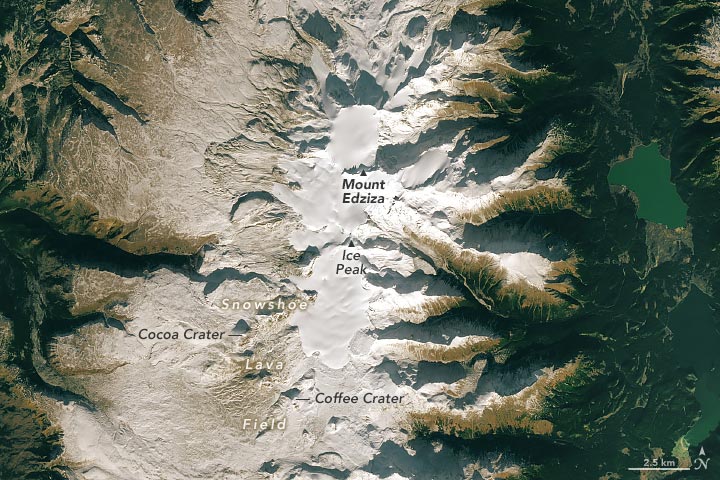
Satellite image of Snowshoe Lava Field and the surrounding volcanic terrain captured on October 26, 2023, by the Operational Land Imager-2 on Landsat 9.
Features in this northern British Columbia volcanic area draw their names from a few of our favorite wintry things.
Pack some winter footwear and a couple of hot beverages for this volcanic tour in northwestern Canada. The Snowshoe Lava Field, with landmarks such as Coffee Crater and Cocoa Crater, is part of the Mount Edziza volcanic complex in British Columbia. The stratovolcanoes, cinder cones, and lava domes in this area were created in a series of eruptive cycles over several million years.
Capturing the Volcanic Terrain
Landsat 9’s OLI-2 (Operational Land Imager-2) captured this image of the Snowshoe Lava Field and the surrounding volcanic terrain on October 26, 2023. The stratovolcano Mount Edziza, with its ice-filled summit caldera, formed around 1 million years ago. At 2,786 meters (9,140 feet) in height, Edziza is one of Canada’s tallest volcanoes. Its slopes were a source of obsidian that was traded regionally as early as 10,000 years ago.
A Young Volcanic Field
The Snowshoe Lava Field, extending south and southwest from Ice Peak, is among the younger features in the Mount Edziza volcanic complex; it formed in the most recent volcanic cycle within the past 20,000 years. Several cinder cones punctuate its basaltic expanse, including Coffee Crater and Cocoa Crater, whose names reflect their rich brown hues. In this autumn scene, though, a dusting of white snow obscures the color of the rock.
Remote Wilderness and Geological Interest
This land of lava is a remote wilderness area within Mount Edziza Provincial Park. There is no vehicle access to the park, so adventurers can only access it via floatplane or on foot. The land supports wildlife such as moose, caribou, and grizzly bears, and is culturally significant to the Tahltan Nation.
Geologists are also interested in the area’s lava flows that cooled underneath or alongside glacial ice. In studying the characteristics of ice-cooled lava, for example, they might better estimate the past ice thickness in other volcanic regions on Earth. It may even help in deciphering the climatic and geologic history of Mars, where scientists have found evidence that lava interacted with water or ice.
NASA Earth Observatory image by Michala Garrison, using Landsat data from the U.S. Geological Survey.


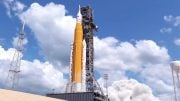
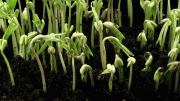

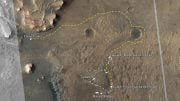

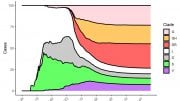

Be the first to comment on "Mysteries Beneath the Snow: Unraveling the Secrets of the Snowshoe Lava Field"